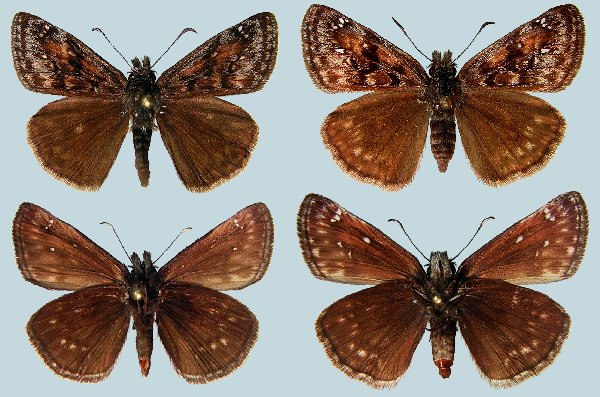Erynnis pacuvius lilius

Photo Life History: Erynnis pacuvius lilius
Habitat: Mountain Canyons; Just below Mountain Hilltops
Host Plants: Ceanothus velutinus
Suitable Lab Host Plants: Ceanothus spp.
How to Find Female Butterflies: Click here.
How to Care for Live Female Butterflies: Click here.
Methods of Female Oviposition:
How to Find Eggs:
How to Hatch Eggs: Consolidate eggs into one container
How to Find Caterpillars in the Field: Look for Skipper Nests. Larvae are not too difficult to find host plant when adult flights have been strong.
Caterpillar setups: Open terrariums; Open Bucket;
Larva to Pupa: Larva Changes Color prior to hibernating as a larva. It will pupate and emerge the next spring.
How to Find Pupae in the Field: Look for Skipper Nests. Larvae will sometimes pupate in their nests.
Number of Broods per Year: 1
Overwintering Stage: Mature Fifth Instar Larva
Overwintering Strategies: Your Own Backyard; Refrigerator
Post-Hibernation Strategies: Expose mature last instar larvae to warmer temperatures, long-day photoperiod, and humidity. They should pupate within 14 days of being exposed to these conditions.
Avoiding Diapause Techniques:
Disease Prevention: Change out host plant and remove frass every four or five days.
Emergence: Emergence Container
Field Notes: Population numbers can fluctuate in the Northern Utah Wasatch Range.

